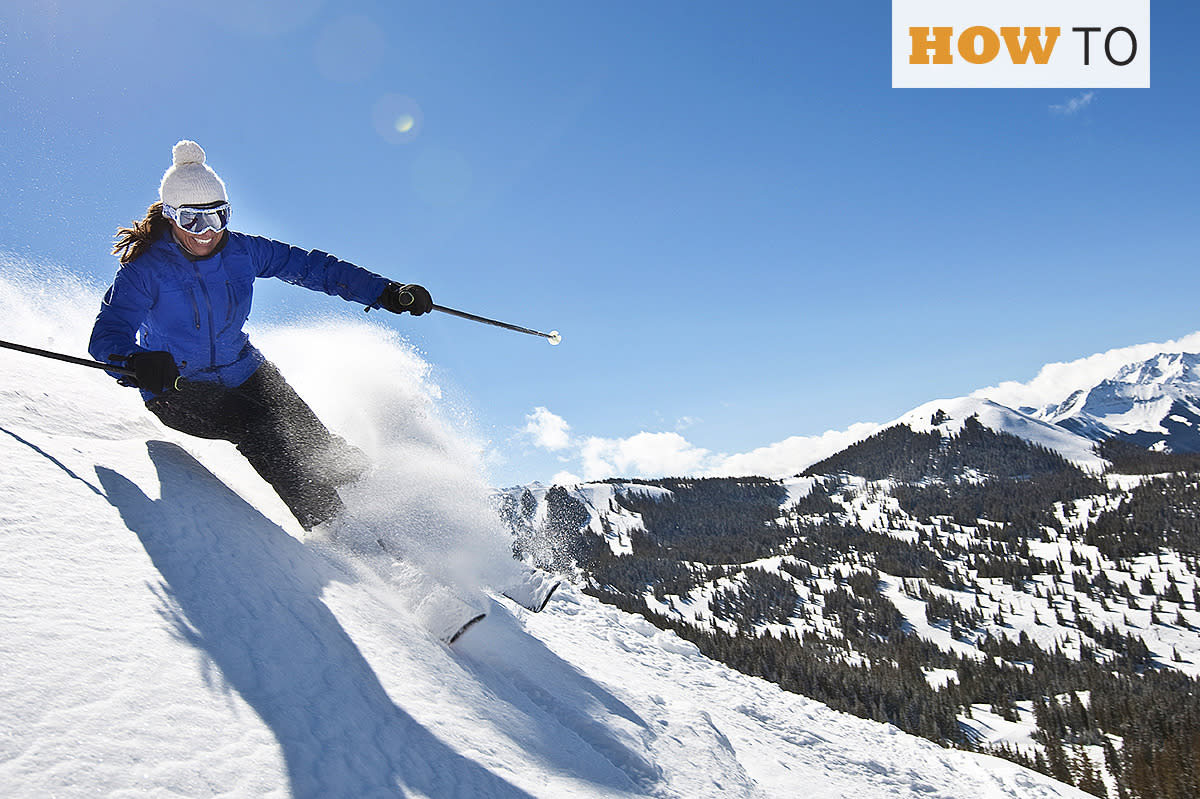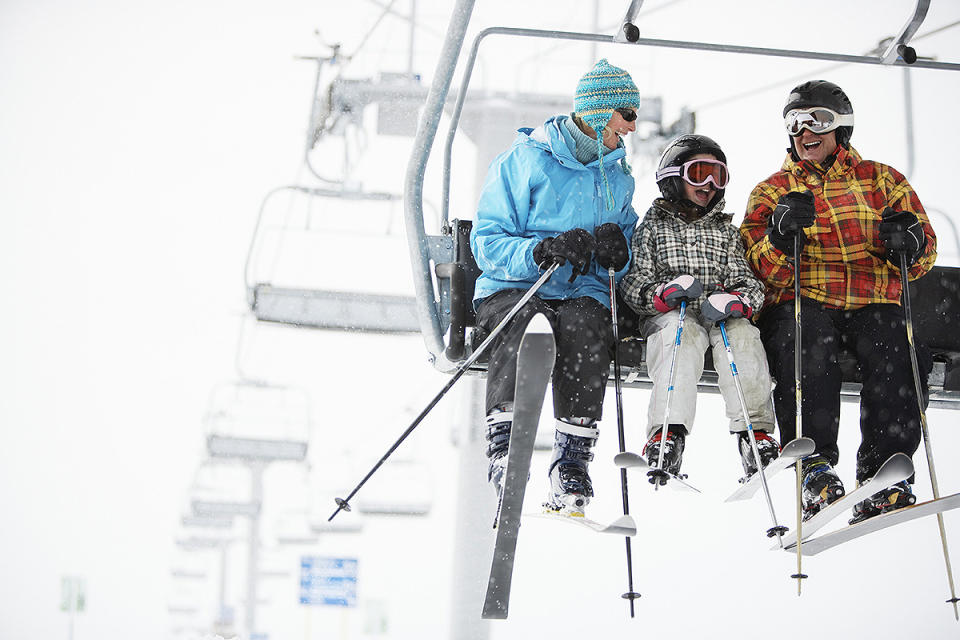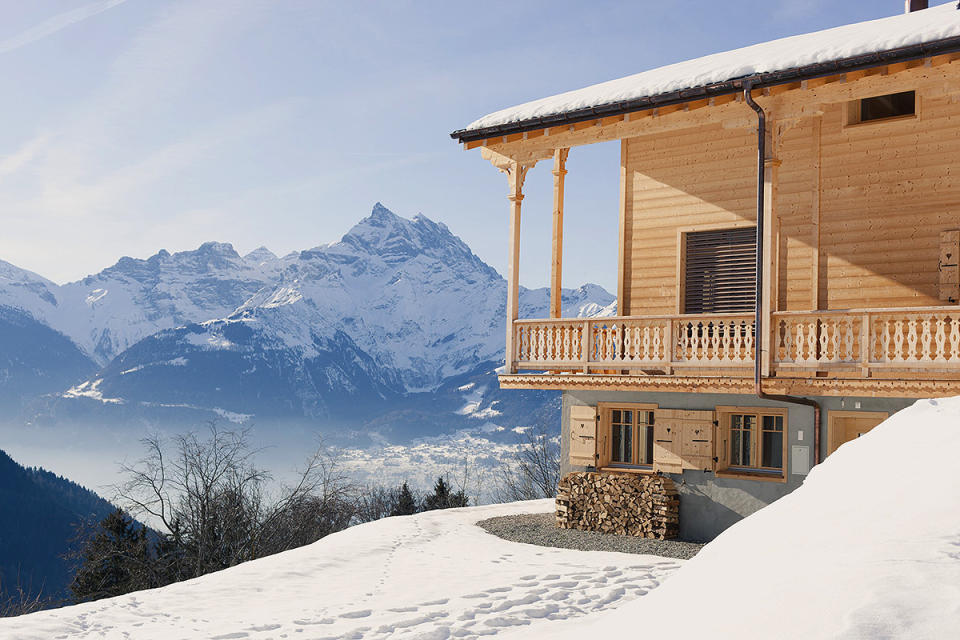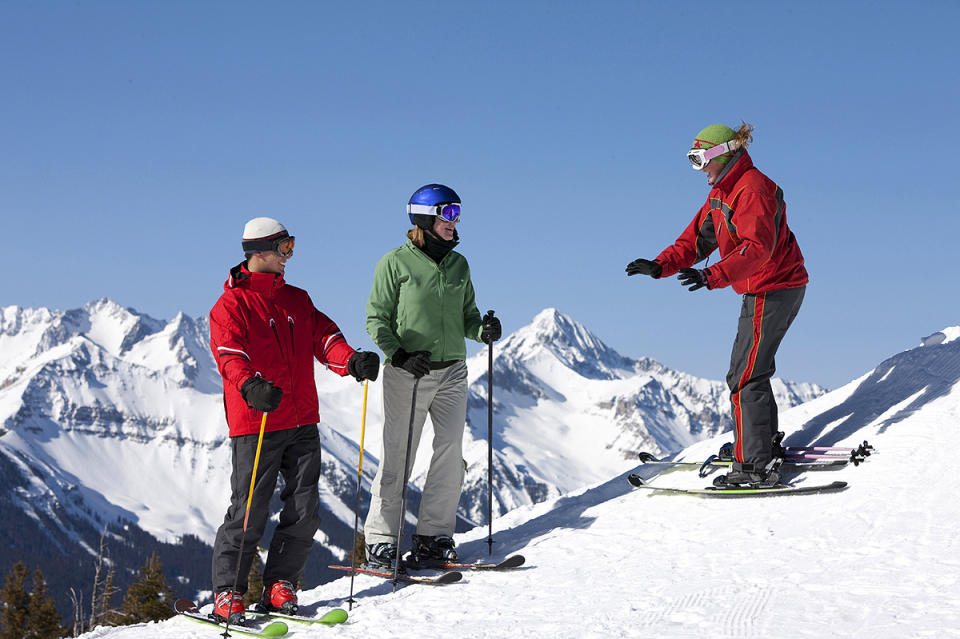How to Take a Ski Trip Without Going Broke

Here’s how to hit the slopes without breaking the bank. (Photo: iStock)
Just one day of skiing for a family of four can cost more than $700 for lift tickets and equipment rentals.
It’s no wonder that a recent survey by the National Ski Areas Association found that 56% of ski resort visitors come from a household with an annual income exceeding $100,000.
“Snow sports participants continue to skew significantly more affluent than the general U.S. population,” concluded the report, which surveyed skiers and snowboarders at 87 ski resorts throughout the U.S.
It’s also a shame that the sport has become so obscenely expensive.
While we can’t do anything to make resorts lower their astronomical costs, there are some ways to reduce the cost of skiing and snowboarding, making it much more affordable—even for those on a budget.
Book early

The sooner you book your winter ski trip, the more money you can save. (Photo: iStock)
All components of a ski vacation, from lodging to lift tickets, or airfare if needed, will be cheaper the further in advance you book. So make your plans and pay for them as early as possible.
Go off-peak
Traveling mid-week, early or late in the season and/or avoiding national and school holidays will affect the price you pay. Lodging will certainly be more expensive during these peak times and lift ticket prices vary depending on when in the season you want to hit the slopes.
Pick a non-brand ski area
Chances are, the bigger or more well known the ski resort the more it is going to cost you, no matter what time of the season you go. But some of the smaller ski areas provide just as much charm and quality of skiing as the branded resorts, just without the price tag.
"Every ski area has its own soul, so it’s not like you miss out by going to one of the lesser known areas,” explains Evan Reece, CEO of online discount lift ticket marketplace Liftopia. “Many of them have tremendous character and depending on the skiing you are looking for you often don’t have to make many trade offs.” And luckily the Liftopia website is a great resource for researching some of the lesser known areas and comparing their prices.
Buy discount lift tickets

Buying discounted lift tickets in advance is a great way to save some money. (Photo: Getty Images)
Purchasing your lift tickets from an online marketplace such as Liftopia or GetSkiTickets.com can save you up to 80% off walk-up window rates at hundreds of ski locations throughout North America and Europe. These sites allow skiers and boarders to take advantage of major discounts by booking their tickets in advance. There are even options that include some flexibility and for a slightly more expensive (but still discounted) rate, you have options to change your dates of usage.
Purchase a season pass
If you plan on skiing multiple times in a season at the same resort, it makes financial sense to purchase a season pass. These usually cost the same amount as 8-10 individual days of skiing (varies by resort). Multi-resort passes like the Mountain Collective, M.A.X Pass or the Powder Alliance are an awesome option if you want to travel to several different resorts throughout the season. Each one has different rules and usage regulations so be sure to check each one out to see which is the best fit. Season passes also offer other discounts such as money off rentals or dining options at the resorts.
Buy ski packages
It is economically beneficial for resorts and mountain towns to ensure that local lodging is not sitting unoccupied during ski season, and this can work in your favor in a big way. Ski resorts work with local hotels to offer their rooms as packages so you can get lodging, lift tickets and ski rentals for one, usually heavily discounted price. Sites like Expedia or Ski.com are great places to start.
Look for hotel alternatives

A nearby AirBnB can be a great (and cheaper!) alternative to the major resorts. (Photo: Corbis)
Rather than booking a hotel room, you can save money by staying in a private rental, such as through AirBnB or VRBO. These are an especially good option if you are traveling as a family, or with a group of friends. Also, the further away from the ski areas you stay the cheaper they will be - perfect if you don’t mind driving to the slopes never day.
Rent off the resort
Renting skis or a snowboard is almost always cheaper when you are off the resorts. But if you bundle your rentals with a lift ticket and purchase ahead of time you can save money on both. "The ski areas really would love you to rent with them, rather than the private rental shops,” advises Liftopia’s Evan Reece. “So they incentivize this and you can save a lot more by purchasing a package.”
Beware of baggage fees
It is worth researching the cost of taking your own equipment with you on a flight and comparing this with the cost of rentals at your destination. It is likely that the excess baggage fees you will pay to take your skis or snowboards with you, which can soar into the hundreds of dollars, will cost more than paying for rental equipment once you get there.
Hire private Instructors

Opt to hire your own private instructor rather than one from the resort. (Photo: iStock)
If you are wanting to have some lessons during your vacation the go-to option is always the instructors at the resort. But these can be pricey, especially if you are after 1-on-1 tuition. Instead, there are always good, private options available if you research. Craigslist is a good place to start, or ask around some local places once you get there.
Make your own food
The cost of dining out varies from ski resort to ski resort but is almost always priced at a premium, even for more laid-back fare. Packing lunches and cooking your own dinners will save you a lot of money over the course of your trip.
Let Yahoo Travel inspire you every day. Hang out with us on Facebook, Twitter, Instagram, and Pinterest.

